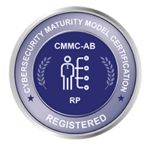
By: Jonas Gyllensvaan, Founder and CEO, SyncDog
RSA Conference is known for the breadth and depth of cybersecurity expertise it draws to San Francisco each year. From the double Expo floor to speakers and sessions, the four-day-long conference is a whirlwind. While some companies like Verizon and IBM opted out this year due to COVID-19 fears, SyncDog was there! Beyond the buzz of the virus, the conference went on just like every other year. For those that couldn’t attend, here are three key themes and topics we observed:
Zero Trust
Appropriately coined, Zero Trust refers to the cybersecurity practice of trusting no one and nothing. When applied, this framework requires organizations to verify absolutely everything. Today’s IT environment is complex and users access a myriad of apps and websites from a diverse array of devices, both within the company network and outside of it. From a practical position, Zero Trust is challenging for companies of all sizes to execute on but is an increasingly popular buzzword as it relates to data transparency and trust, the next key theme below.
Data Transparency
The U.S. continues to play catchup with the rest of the world in taking action to protect individuals’ personal information and privacy online. However, steps forward are in progress as is evident by the implementation of CCPA. For companies that interact with consumers who fall under policies like CCPA and GDPR, there is the legal responsibility to become compliant very quickly and thoroughly. These regulations aim to create data transparency. Data transparency is the clear disclosure of what information is collected, where it’s stored and who has access. The ultimate goal is fostering trust between individuals and organizations.
The Human Element
The theme of this year’s RSA Conference, the human element was, of course, the overarching focus of many presentations. Perhaps the most easily and readily identifiable weakness in the cybersecurity chain is that of human error. An article in DarkReading, identifies six key ‘human element’ roles – “end users, security leaders, security analysts, IT security administrators, programmers, and attackers.” Cybersecurity exists because threat actors attack individuals and institutions for personal or nation-state gain, which is obviously categorized as ‘bad’. What was interesting at this year’s RSA Conference was repeat recognition of threat actors as facilitators of innovation; if they didn’t figure out new means of attack, no one on the ‘good’ side would be creating counter defenses and proactive solutions.
Overall, RSA 2020 got on just like years prior, only with more hand sanitizer and fist bumps. Interested in learning about how our modern device management solution addresses the above themes? Get in touch to learn more!
